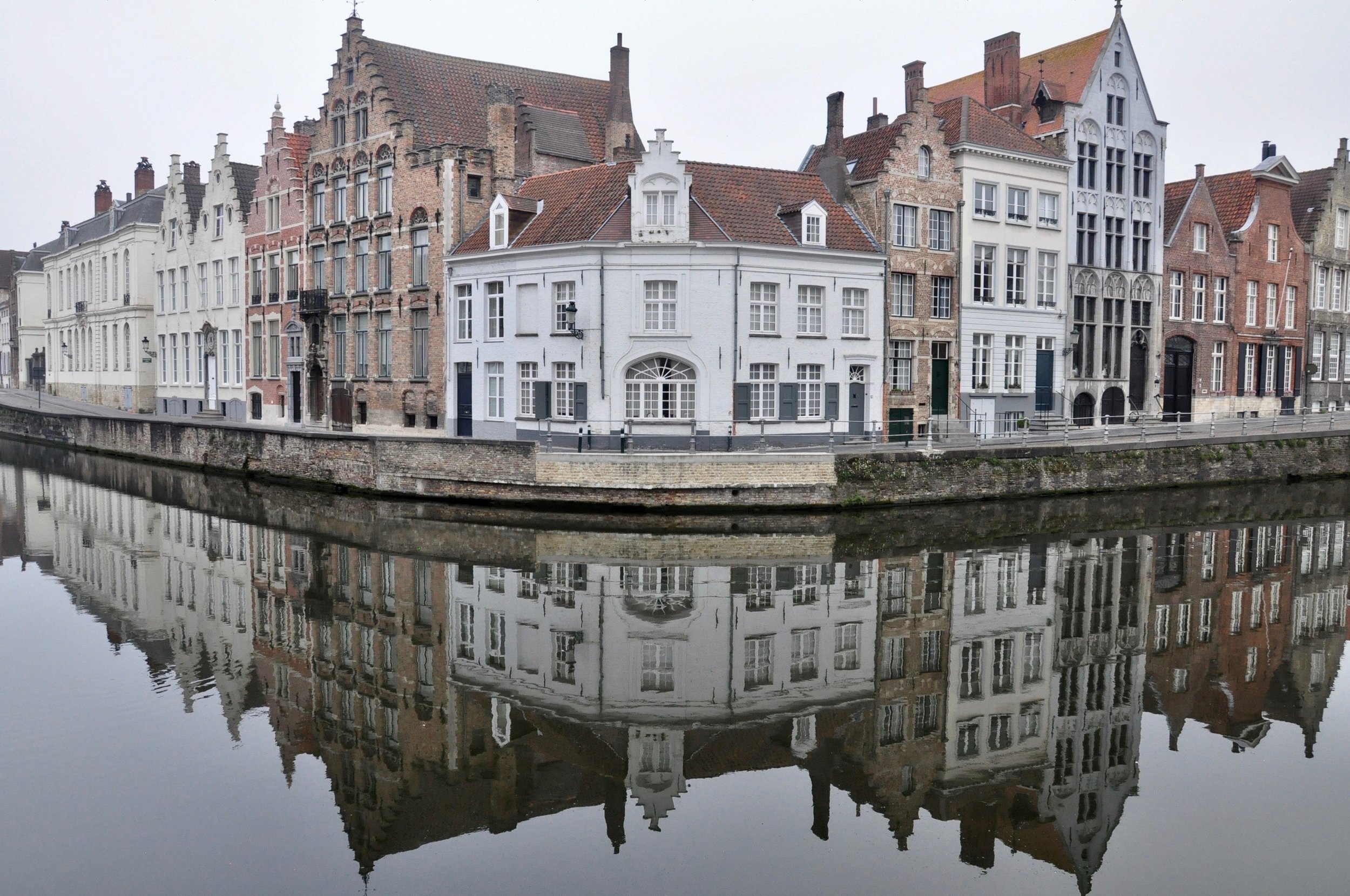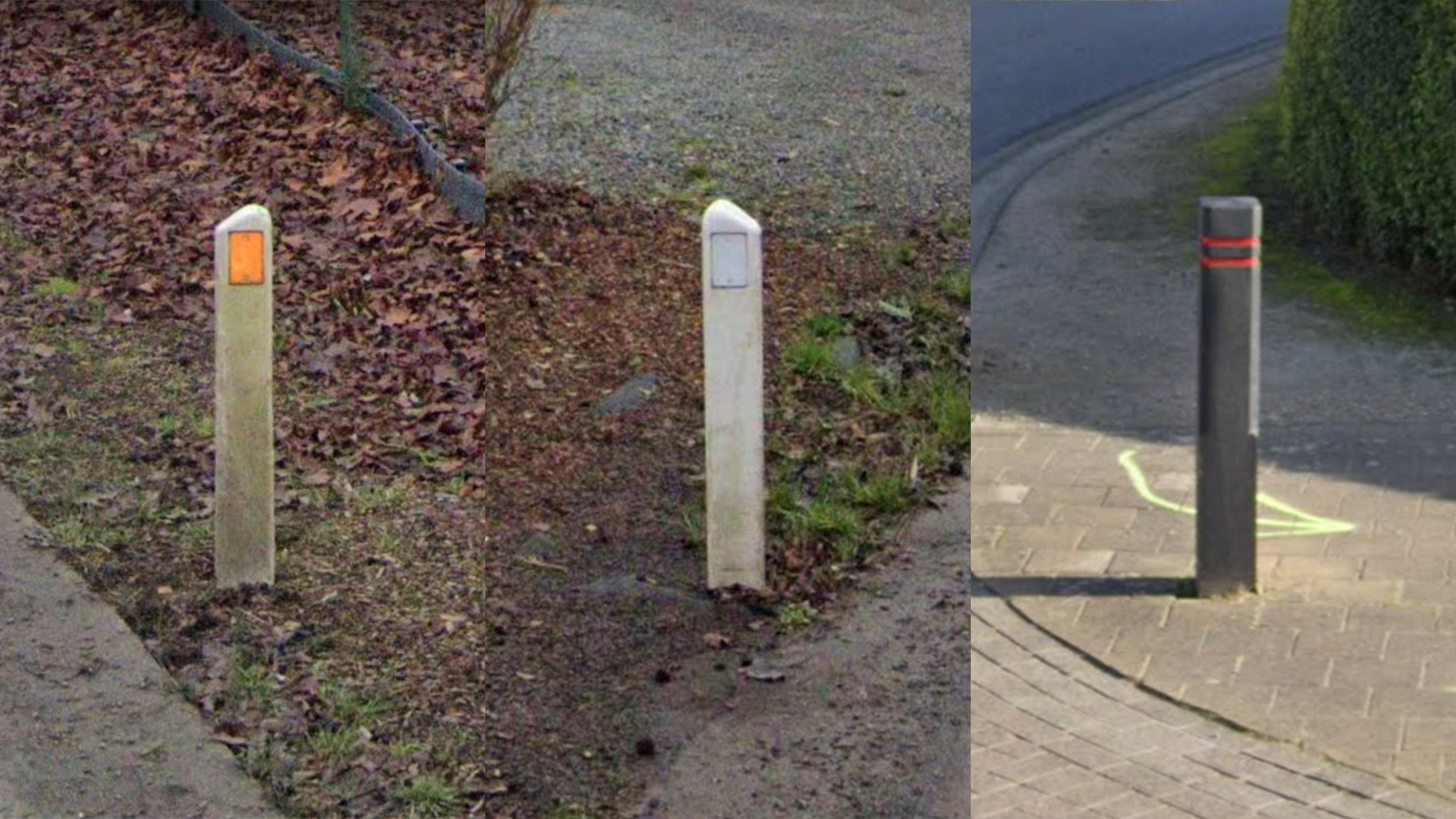
Belgium
Belgium uses white bollards with a yellow rectangular reflector on the front and white on the back. A second type of bollard is dark brown with two red stripes at the top. Occasionally, other bollards can be seen.
NOTE: Denmark uses similar white bollards, but they have a red stripe at the top and the reflector is not rectangular. The dark brown bollard with two red stripes can also be seen in the Netherlands.
Belgium uses A-type guardrails with yellow reflectors.
NOTE: In Europe, only Spain, Andorra, and Belgium use these reflectors. For a good overview of European guardrails, see this infographic.
Most poles in Belgium are concrete, square shaped, and have tiny holes running up them. They often have small metal wrappings around them. The second most common type of pole has oval-shaped holes. You can find many different types of concrete poles in Belgium.
NOTE: The small metal wrappings can be found in France as well.
Directional signs in Belgium are most often blue or white.
Kilometre markers in Belgium are often green, but can have red text as well.
Street name signs in Belgium are very diverse, and often unique to a city. Most common colours are white and dark blue. They often have the town or city name written on them.
NOTE: These signs often have variable designs, but most of them are fairly short and tall. In comparison, Dutch street signs are almost always much longer than they are tall.
Belgium is generally flat in the northwest of the country, especially near the coast. The further south east you go, the hillier.
Belgium has 3 official languages.
Dutch (Flemish), spoken in Flanders, the Northern part of Belgium. There is an abundance of letters and combinations like z, w, ee and ij.
French (Walloon), spoken in Wallonia, the Southern part of Belgium. You can see letters like ç, é, è and à.
German, spoken in Ostbelgien, a small region in the east of the country. You can see letters like ä, ü, ö and ß.
Bus stop signs in Flanders (and Brussels) have a white rectangle at the top. In Wallonia they will have a yellow top.
In Flanders (and Brussels), 95% of warning signs have a thick red outline, without a white border. Contrarily, you will most often find warning signs with a small white outline in Wallonia.
NOTE: The signs found in Flanders are the same as the Spanish ones.
Phone codes in Belgium are very useful to determine the region you are in. They are 9 digits long. The 1 or 2 number(s) after the leading 0 indicate the area code.
0X XXX XX XX (Brussels, Antwerp, Liege, Ghent.)
0XX XX XX XX (Other cities.)
NOTE: Mobile numbers start with 04 and are 10 digits long.
You can click on the image to enlarge it.
As mentioned before, municipality names are often mentioned on street signs, usually in smaller font than the street name. The map shows a selection of recognizable street signs in the bigger cities.
NOTE: Of the big cities, Bruges (Brugge) is an exception to the rule of signs usually mentioning the municipality name.
You can click on the image to enlarge it.
The coastal plain is extremely flat and consists of so-called polders, which are man-made fields at or below sea level, surrounded by many waterways. This landscape is situated near the North Sea coast, as well as near the western part of the border with the Netherlands, particularly around Antwerp.
NOTE: This part of Belgium is especially often confused with the Netherlands. Carefully look around for clues to distinguish the two countries if you find yourself in this landscape.
Many parts of the Belgian North Sea coast are lined by apartment blocks, in a manner that is often derisively referred to as a “wall” of buildings by locals.
Near the coast, you will also sometimes be able to spot a dune landscape, with low bushes, long grass and sandy soil.
GeoGuessr’s own official maps are not very good, for a variety of reasons. Plonk It recommends you play these maps instead:
IntersectionGuessr - Belgium (map link) - Arbitrarily generated locations at intersections, and therefore potentially pinpointable (but this is not guaranteed).
A Balanced Belgium (map link) - 61,250 locations with equidistant generation. Intended to practise region guessing, and might not be pinpointable.





































